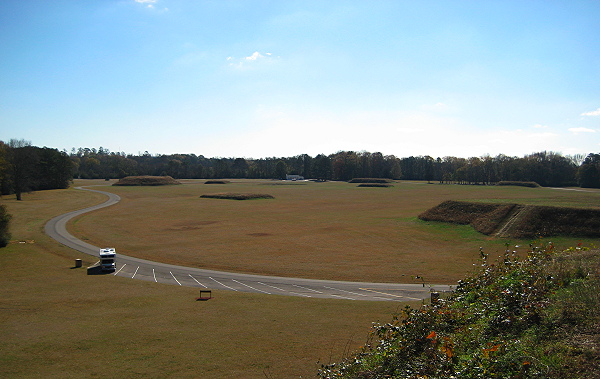Wednesday, January 2, 2008 - Philadelphia MS
< previous day | archives | next day >
Leaving Tuscaloosa
This Lazy Daze doesn't deal well with temperatures much below 30 degrees. It's just not well enough insulated. The cold air slides down the glass, out under the drapes and out across my bed. It was in the high teens last night - brrrrr.
I'm headed generally westward. Down 69 through Moundville Alabama then west through Eutaw Alabama and on westward toward Vicksburg Mississippi.
First stop - Moundville Alabama
I'm writing from the foot of the large mound at the Moundville Archaeological Site.
Night camp
Wal-Mart parking lot in Philadelphia, Mississippi
A Theory of the State
States have a peculiar dual character. They are at the same time forms of institutionalized raiding or extortion, and utopian projects. The first certainly reflects the way states are actually experienced, by any communities that retain some degree of autonomy; the second however is how they tend to appear in the written record.
Fragments of an Anarchist Anthropology, David Graeber, pg 65
